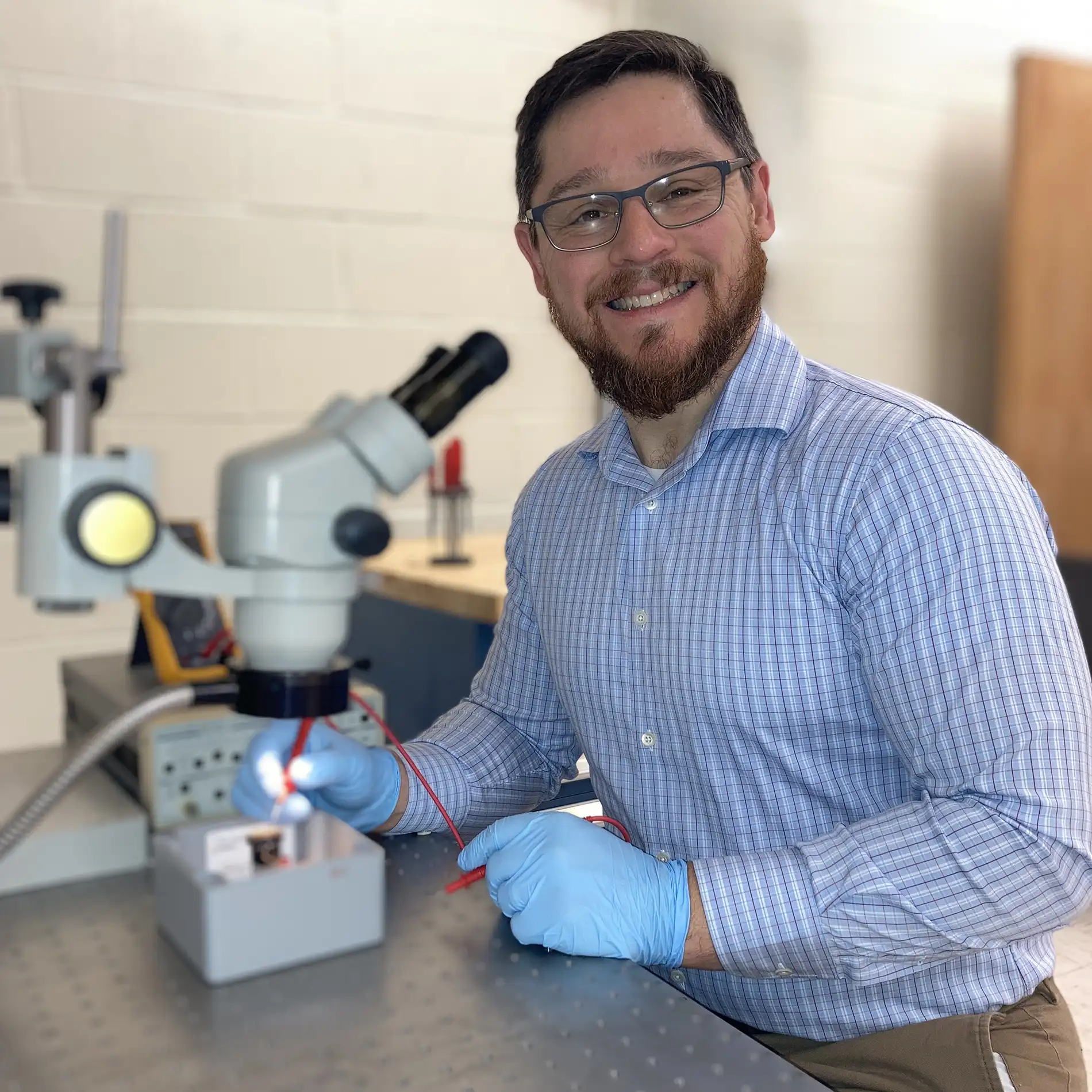From curious beginnings to quantum innovations: Zachery Allen Enderson's scientific odyssey
Meet Zachery Enderson
In the intricate world of condensed matter physics, Zachery Allen Enderson, Ph.D., found more than a career; he found his passion. Growing up in Knoxville, Tennessee, Enderson was always surrounded by science, thanks to his parents who worked in the medical field. This early exposure, combined with the encouragement from his teachers, especially his high school science teacher Dr. Brown, ignited a curiosity in Enderson that led him to pursue physics.

As a participant in the Intelligence Community (IC) Postdoctoral Fellowship, Zachery Allen Enderson researches the development of infrared detectors using artificial moiré quantum materials to advance quantum information systems and other technological applications. (Photo Credit: Zachery Enderson)
"Dr. Brown's passion and the week-long exploration of modern physics and quantum mechanics truly inspired me to dive deeper into the field," Enderson recalls.
Enderson's educational journey took him to the Georgia Institute of Technology, where he earned a Bachelor of Science in Physics in 2013 and later a doctoral degree in Physics in 2021. His research focused on condensed matter physics, specifically 2D materials, an area that has captivated scientists due to its potential applications in various electronic and material fields.
In 2022, Enderson joined the ORISE Intelligence Community (IC) Postdoctoral Research Fellowship Program.
The IC Postdoctoral Research Fellowship was established in 2000 to support unclassified basic research in areas of interest to the IC. Funded primarily by the Office of the Director of National Intelligence (ODNI), the Program annually supports several Postdoctoral Fellows (Postdocs) from U.S. accredited colleges, universities, and U.S. Government laboratories across the country.
As an IC Postdoctoral Research Fellow, Enderson works under the mentorship of Wei Pan, Ph.D., at Sandia National Laboratories. His project, titled "Infrared Detectors using Artificial Moiré Quantum Materials," is part of the broader "Quantum Engineering for Quantum Sensors" initiative. The aim of the project is to reproduce the exotic electronic properties of graphene and twisted graphene heterostructures in more easily manufacturable semiconductor materials. "Our goal is to use vertical and lateral heterostructure engineering of semiconductors to produce these electronic properties," explains Enderson.
Throughout his fellowship, Enderson has been deeply involved in developing artificial graphene structures using III-V semiconductors like InAs and GaSb. This involves creating a honeycomb array through electron beam lithography and inductively coupled plasma etching. The goal of this process is to generate artificial graphene and then form a second array rotated relative to the first to create an artificial graphene moiré structure. While Endersen is still in the process of working towards this goal, he notes that there is significant potential to it. "We expect this work will allow us to replicate high infrared photoresponse observed in specific graphene bilayer structures, opening new pathways for research and applications," Enderson states.
Enderson's research also aims to develop new materials with unique electronic properties that can be used in quantum information systems and other advanced technologies. "Twistronic devices, which these materials fall under, have potential applications in optical sensors, high-density data storage, quantum information, and ultralow power computing," he explains. The impact of his work could be far-reaching, contributing to advancements in these critical technological areas.
During his fellowship, Enderson has also had the opportunity to perform experiments at the National High Magnetic Field Lab in Tallahassee, Florida, where he utilized the world's most powerful magnet. "Working at the National High Magnetic Field Lab has been an incredible experience. The facility and the people there are amazing, and it's always a pleasure to conduct experiments in such an environment," Enderson shares.
A typical day for Enderson varies depending on the phase of his research. It ranges from device fabrication in the cleanroom, performing experimental measurements at the National High Magnetic Field Lab, to data analysis using Python and Matlab. This diverse set of activities has allowed Enderson to gain a wide range of technical skills, including nanolithography and electronic device fabrication. "This experience has been instrumental in my growth as a researcher, providing me with the opportunity to lead my work and collaborate with a diverse set of scientists," he says.
As Enderson’s fellowship progresses, he is on the verge of contributing to the scientific community with a forthcoming publication in Science Advances, focusing on his innovative research in creating artificial moiré quantum materials. He has already showcased his work through an oral presentation titled “Flat-band Generation in InAs/GaSb Quantum Wells Through Vertically Engineered Heterostructures” at the 2024 APS March Meeting. Additionally, Zachery valued the opportunity to engage with peers and explore diverse scientific fields during the 2023 S&T Tech Week, an event that significantly enriched his fellowship experience and provided valuable insights into the broader scientific landscape.
As Enderson looks to the future, his immediate goal is to continue his scientific research, with a focus on the application side of science and device development. He is also considering opportunities within the national laboratory system, given his positive experiences during the fellowship. "I aim to continue working on exciting scientific problems, leveraging the skills and experiences I've gained during this fellowship to contribute to the field of condensed matter physics and beyond," Enderson concludes.

